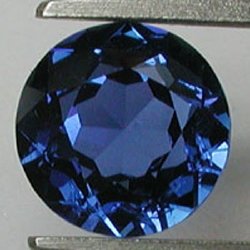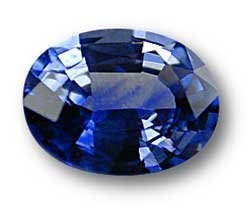 The term “Yogo sapphire” refer to typically cornflower blue sapphires found only in the Yogo Gulch area, whereas “Montana sapphire” generally refers to sapphires found in other Montana locations. Read on, and learn about Yogo sapphires that adorn some of the fine pieces of jewelry available today…
The term “Yogo sapphire” refer to typically cornflower blue sapphires found only in the Yogo Gulch area, whereas “Montana sapphire” generally refers to sapphires found in other Montana locations. Read on, and learn about Yogo sapphires that adorn some of the fine pieces of jewelry available today…
Yogo sapphires are natural and not heat treated
Most of the world’s sapphires are heat treated to enhance the stone and allow the true color and beauty to shine through. Yogo sapphires do not need this heat treatment as they formed deep in the earth and were naturally heated. The rocks cooling history may have something to do with its beautiful cornflower blue color and lack of zoning (zoning refers to the uneven distribution of color in a sapphire, as shown in the image below). Longer cooling times might allow the titanium and iron to spread more uniformly through the crystals, affecting the color.
Yogo sapphires were used in Tiffany’s jewelry during their “Montana Sapphire” period jewelry
Tiffany’s famed gemologist, George F. Kunz, author of “Gems and Precious Stones of North America”, had known of the lower-quality Missouri River sapphires for 30 years. He recognized quality when he saw it in Yogos, as not just pretty pebbles; they were actually excellent quality, natural sapphires. Kuntz was intrigued by them because of their quality, color and clarity, and deemed them “the finest precious gemstones ever found in the United States.”
Yogo sapphires tend to be small, larger stones are very rare
The rough sapphire crystals tend to be small and flat, so cut Yogo gems heavier than 2 carats are rare. Only about 10 percent of cut pieces are over 1 carat. The largest recorded Yogo rough, found in 1910, weighed 19 carats and was cut into an 8-carat gem. The largest cut Yogo is 10.2-carats and is in the Smithsonian Institution in Washington D.C.
Gold miners in the 1860’s threw these blue pebbles away
Drawn by the promise of vast riches, people traveled great distances to search for gold in Montana. Those prospectors with gold mining experience in California constructed wooden sluice boxes to separate the gold from the river gravel. Heavier than gravel, the sapphires sank to the bottom of the gravel concentrate clogging their sluice boxes allowing the fine gold to wash away. Most of the gold miners threw away these “nuisance” pebbles.
You can own a “lot” at Sapphire Village
In 1969, Yaras’ Sapphire Village, Inc. created the Sapphire Village, a nearby homesite development offering buyers limited mining rights to gather their own sapphires with hand tools. The villagers own lots in the mine area and pay a $40 annual fee to dig yogos at the mine site by hand, using shovels and picks. Each lot is allowed to remove up to four 5 gallon buckets of ore a day. Villagers also can pan in a area of loose alluvial deposits washed out by water. Only 53 people hold permits at Sapphire Village and they are closely held. The only way to acquire one is to buy an existing permit.
Debra McClain is the CEO of Mac’s Gems in Missoula, Montana and has been in the gem business for 25 years including manager of the Jewel of the Rockies sapphire mine (Gem Mountain) in Philipsburg, MT. She and her husband Mac dig many of their own stones and attend shows as dealers all over the Northwest. You can visit Mac’s Gems website at www.montanasapphires.com

